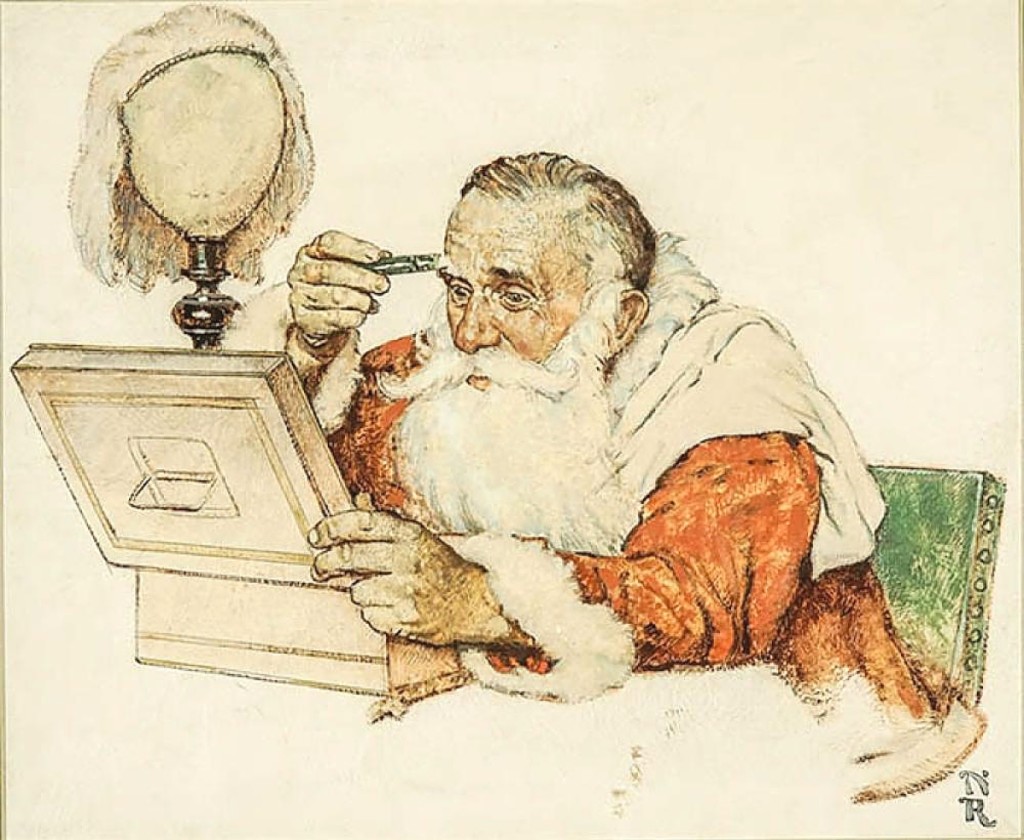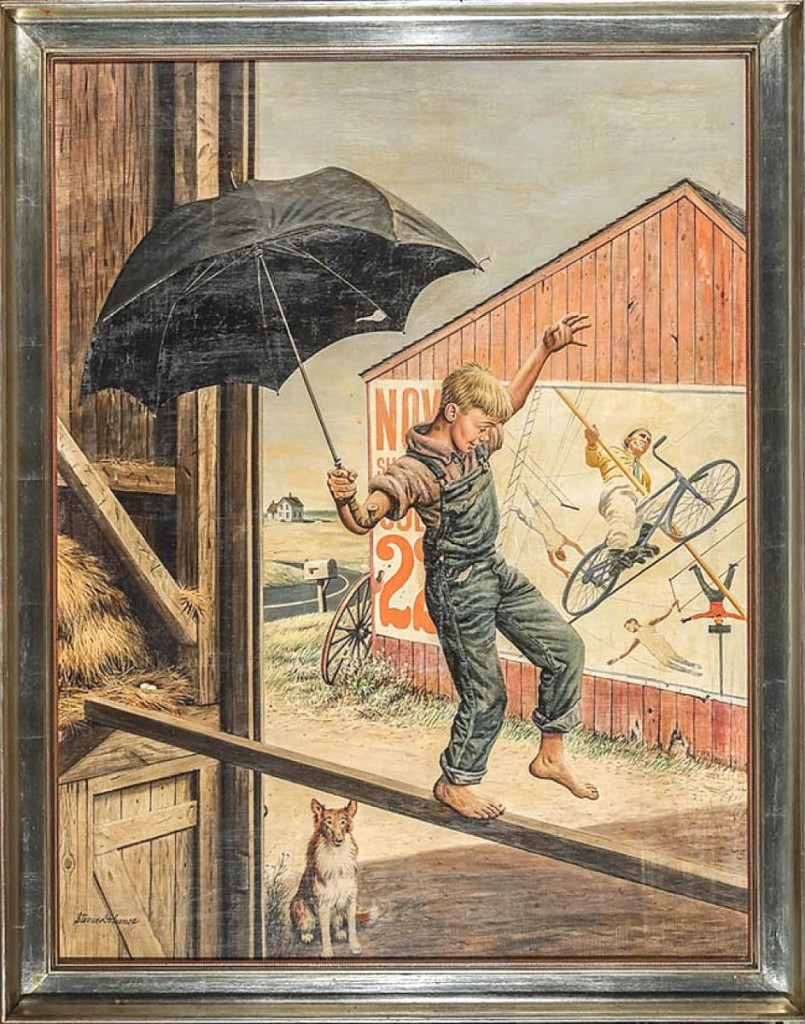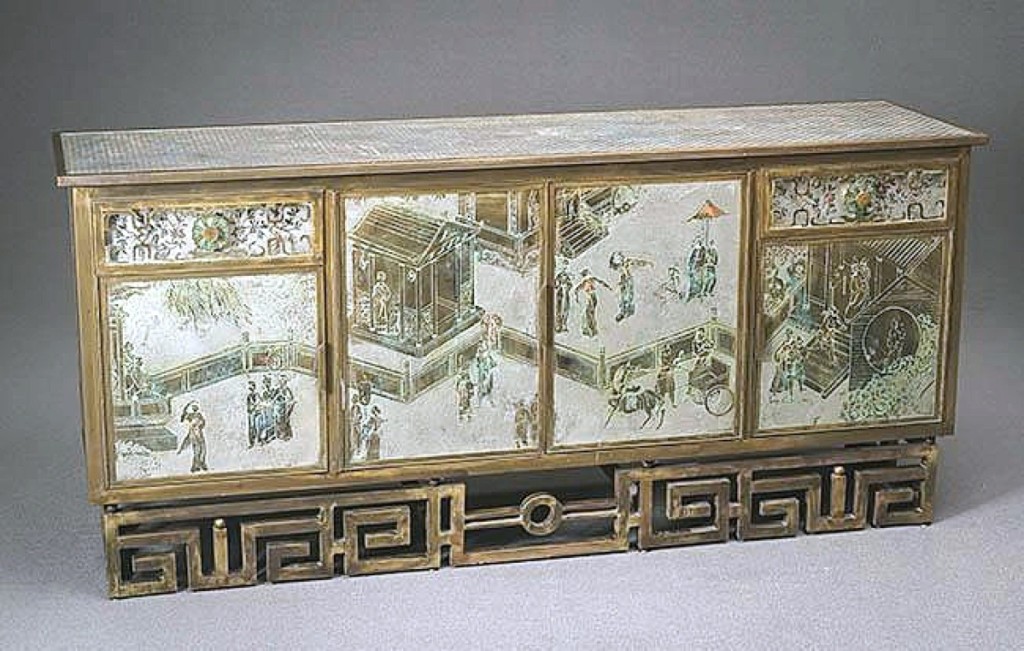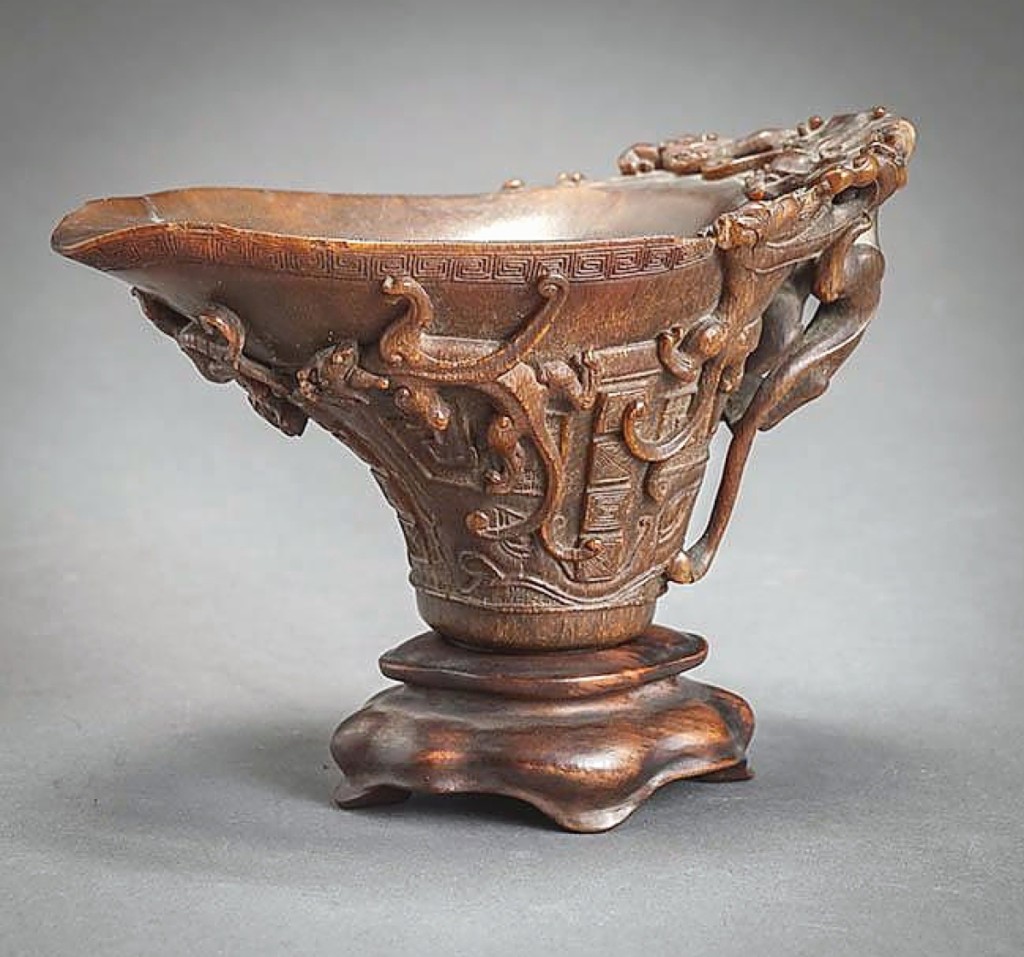
The star of the sale, bringing $164,700, was Norman Rockwell’s “An Audience of One,” a circa 1938 oil and graphite on board. It sold well over the estimate and was likely created to illustrate a story published in the December 1938 issue of the Ladies’ Home Journal.
Review by Rick Russack, Photos Courtesy Weschler’s
ROCKVILLE, MD. – Weschler’s may be the oldest family-owned auction house in the United States. The company, which was started in 1890 by Adam Weschler, is now being run by two generations of the family. Fourth-generation Bill Weschler Jr is now president and fifth-generation family members are involved in day-to-day business. Bill Wechsler said he remembers growing up and working with his father from a young age. One of the specialties of the company in its earlier days was selling circuses: tents, wagons and animals. Times have changed, and the company, working from enlarged offices, now conducts close to 60 sales a year, which include a wide array of antiques, fine art and collectibles. But no circus animals.
Along with paintings, including a Norman Rockwell, and a strong grouping of Asian items, the December 8 sale included a spread of items that were billed as whimsical furnishings, jewelry, early American furniture, silver, Oriental rugs, mid-century decorative arts, Continental furnishings and more. Although one item sold for six figures, and others for high five figures, the sale was designed to include hundreds of interesting items that would sell for less than $1,000. The auction grossed $1,020,275. More than 600 potential bidders were watching online.
It was clearly the good selection of American paintings that led the sale. “An Audience of One” by Norman Rockwell (1894-1978), a circa 1938 oil and graphite on board, was easily the highest priced item, realizing $164,700, well over the estimate. It may have been created to illustrate a story published in the December 1938 issue of the Ladies’ Home Journal, and depicted Santa getting himself ready for work. It is pictured in the definitive work on the artist, published by the Norman Rockwell Museum in Stockbridge, Mass., and was accompanied by correspondence between Rockwell and the original owner of the work.

An oil painting for the cover of the June 11, 1949, edition of the Saturday Evening Post was the second highest priced item in the sale. By Stevan Dohanos, “Walking The Tightrope” finished at $97,600.
An oil painting for the cover of the June 11, 1949, edition of the Saturday Evening Post was the second highest priced item in the sale. By Stevan Dohanos (1907-1995), “Walking The Tightrope,” a frequently reproduced work, depicted a farm boy crossing a beam placed in a barn. It has an interesting detail, which the Post described as: “Having found the setting he wanted for his circus-theme cover painting – on the Brotherton farm near Westport, Conn. – Stevan Dohanos began rigging up a beam for the farm boy to do his tightwire act on. While working, he noticed a hen hanging around…when he returned three days later with a borrowed farm boy to pose for him – Sandy Frey of Westport – he found that two fresh eggs had been deposited in the hayloft at one end of the beam. Dohanos deposited the eggs gently in his picture, reasoning that the hen…wanted to get on the cover of the Post, but was too bashful to pose, and had done it with eggs.” The painting just missed $100,000, finishing at $97,600. Dohanos did more than 125 covers for the Post, plus others for several other magazines of the period.
Not only oil paintings did well. A 1971 Andy Warhol (1928-1987) screenprint in color, printed on wallpaper, “Cow (Yellow and Blue),” (F&S 12) brought $15,860. Perhaps whoever assembled the sale for Weschler’s liked cows, as they were the subject of other works. A painting of Maxine, a Holstein cow, by Lorna Patrick (b 1951) brought $1,464, while another by the same artist, “Hip Cow,” also featured a Holstein and brought $671. Still another, in black and white, titled “As Simple As Black and White,” also by Patrick, brought $549. The artist is best known for her scenes of the Southwest and the California coast.
The strong selection of Asian items included a Chinese carved rhinoceros horn libation cup, dated by the catalog as Seventeenth-Eighteenth Century. It was carved in heavy relief and openwork with six chilongs, which are hornless dragons, around the body and forming the handle. It was 4 inches tall and more than 6½ inches long. With a deep patina, it easily exceeded its estimate, finishing at $39,650. In Chinese tradition, libation cups made of rhinoceros horn were considered magical objects, thought to contain aphrodisiac properties and able to detect poison. Two Nineteenth Century polychrome painted silk Kesi-style panels of immortals with their attendants realized $10,370. Not far behind, in terms of dollars realized, was a Chinese imperial orange peel/yellow glazed dish, which realized $9,760. It dated to the Yongzheng period (1722-35) and was marked in underglaze blue with a Yongzheng mark. There were several lots of Meiji period (1868-1912) Japanese satsuma. A group of three small bowls, each with varying interior and exterior enameled and gilt painted scenes of dragons, koi and Japanese ladies by the seaside, earned $3,172. Another lot, with two vases from the same period, each well decorated, and each about 8-5/8 inches tall, reached $1,222.

This midcentury Philip and Kelvin LaVerne polychromed, acid-etched and textured bronze “Tao” credenza was one of the highest priced items in the sale, selling for $51,240. It was more than 73 inches long and bore the maker’s label.
Midcentury items, some of the last lots of the sale, were and well-received. Creating the most interest was a Philip and Kelvin LaVerne polychromed, acid etched and textured bronze “Tao” credenza. It had a lot going for it. Two paneled doors opened to a faux malachite interior, and there were two drawers over two other decorated panel doors. It was over 73 inches long and bore the maker’s label. It reached $51,240. A large bronze mirror by the same maker, also with original label, reached $4,392. The father and son team started working together in 1960. A Michel Duvaroy “Togo” five-piece modular sofa manufactured by Arconas, circa 1970s, sold for $3,904.
Whimsical was the right word for a collection, assembled in the 1980s, of colorful, imported, hand painted furnishings and accessories distributed by MacKenzie-Childs, based in Aurora, N.Y. The company had been founded in 1983 by Richard and Victoria MacKenzie-Childs, but they lost control of the company in 2001. The company still distributes the types of items they originally did, but with a different color palette. More than 50 lots were included in the sale. The variety was wide, including dining tables, side tables, chairs, settees, sofas, beds, benches and more. Also included were table articles, toys and glassware. Bidders’ favorite was an 84-inch dining table painted with a black and white checkerboard top, standing on decorated pottery legs. It brought $4,636. A pair of wildly decorated twin beds with landscape headboards earned $3,416. A matching settee, appropriately titled “Ridiculous,” might have gone into the same bedroom and brought $1,830. A home with several such pieces would have been a sight to behold.
The only scientific instrument in the sale was a good one. The Eighteenth Century geodetic theodolite, an instrument used by surveyors, realized $32,940, far over the estimate. The central plate was pierced and engraved, it was complete with lenses, the base plate had three leveling screws and a central compass with spirit levels and was engraved with two scrolled calendar tables.

In Chinese tradition, libation cups made of rhinoceros horn are considered to be magical objects, thought to contain aphrodisiac properties and able to detect poison. This Seventeenth-Eighteenth Century heavily carved example sold for $39,650.
A few days after the sale, Bill Weschler said he was pleased with the results. “It was our best sale of the year. We saw a number of new buyers. The Rockwell did what we hoped it would and, in general, American art was strong. The biggest surprise to me was the theodolite. We weren’t expecting that and there was strong interest from London. The rhino horn libation cup also did well.” When asked about the Mackenzie-Childs items, Wechsler said, “Most of that went to two private buyers. I should say happy buyers. So we’re all pleased with the way things turned out.”
Prices given include the buyer’s premium as stated by the auction house. Unsold lots are still available. For more information, www.weschlers.com or 202-628-1281.





























